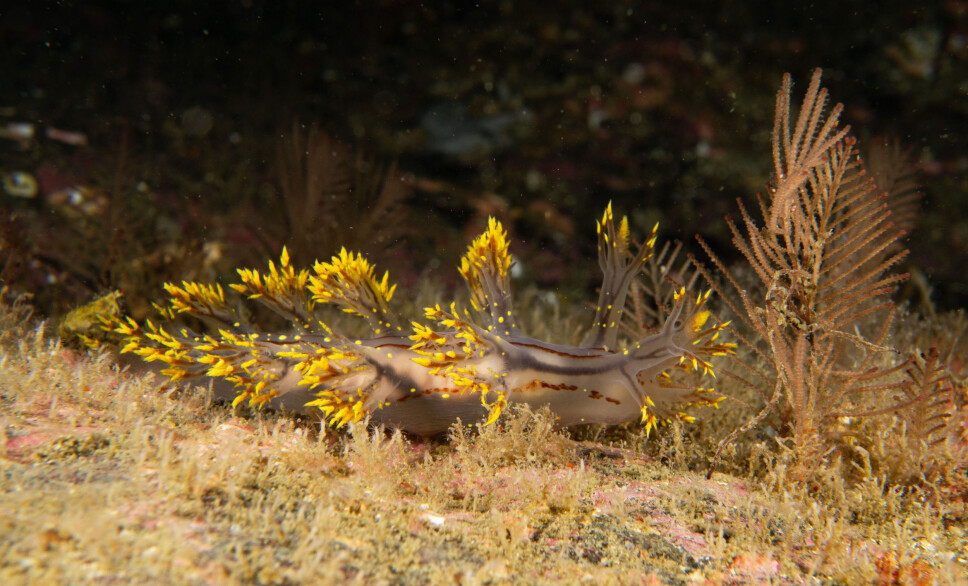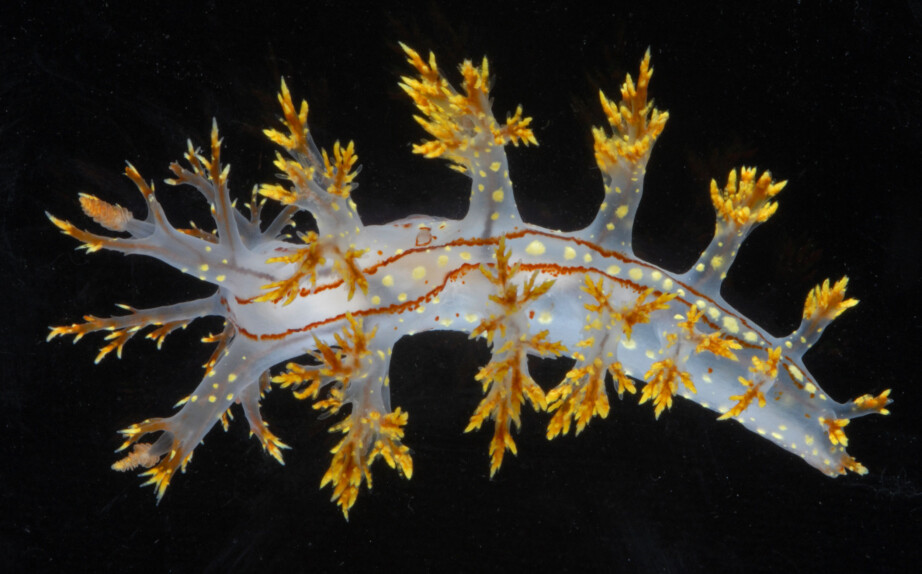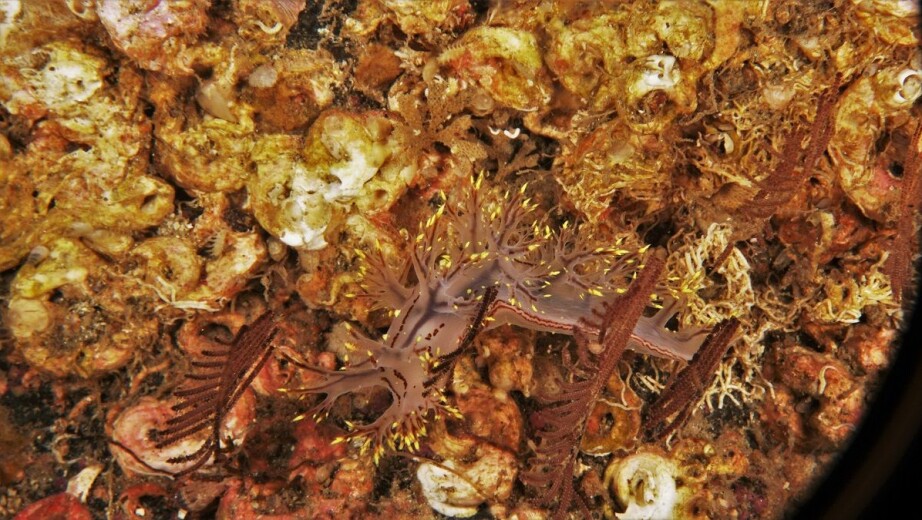This article is produced and financed by NTNU Norwegian University of Science and Technology - read more

Divers discover new species of nudibranch
The new species of nudibranch, Dendronotus yrjargul, is named after a municipality in Norway, where it was found.
The collaboration between divers, underwater photographers and researchers was decisive in enabling a new species of slug to be discovered and identified in Norway’s Trøndelag county.
The historical name for Ørland – the municipality where the slug was found – gave the species its name.
“We named the new slug Dendronotus yrjargul. Yrjar was the old name for Ørland and gul refers to its yellow or golden markings,” Torkild Bakken wrote in the Norwegian nudibranch blog.
Bakken is an associate professor in the Department of Natural History at the NTNU University Museum.

Large sea slug
“Previously, we’ve seen some large Dendronotus specimens with yellow colouring at the far end of the Trondheim Fjord, but this one was clearly different,” Bakken says.
The yellow markings and the brown stripes along the back were clearly marked. The researchers hadn’t seen anything like that before. Eventually they determined that the species had not yet been described.
“But a nudibranch over nine centimetres long was found at the far end of Trondheim Fjord in an area where a lot of people dive, so how did we manage to not discover it earlier? This is a huge slug. Over time, we did find a lot of specimens, both big and small,” says Bakken.
Discovered by underwater photographers
The new species would probably have remained unknown to science if it weren’t for the divers and underwater photographers Viktor Vasskog Grøtan and Kjetil Breivik Johnson. The two men also suggested the name when it became clear that they had found a new species.
Grøtan reported seeing large Dendronotus specimens in other places outside Ørland.
The new sea slug “was pretty similar to a species found in the Arctic, but something was disconcerting when we saw the pictures. The yellow and golden colour markings were very distinct, and so was the brown pigmentation of the stripes,” says Bakken.
Breivik Johnson had been following a particular population of animals for a long time. Several of the researchers became interested in it.

Local knowledge helps
Grøtan and Breivik Johnson are active divers in Ørland’s divers club. They are very familiar with the area around Ørlandet – a good starting point for building knowledge over time, Bakken says.
The divers have documented that the new species lives in an area with strong currents that is also home to numerous colonies of tiny stinging jellyfish, called hydroids, that the new species feeds on.
Both men are skilled underwater photographers. They are also skilled at determining nudibranch species. They have repeatedly visited the same locality. Over time, they have formed a picture of the life cycle and ecology of the species, Bakken writes.
Off to Trondheim, Gulen and Moscow
The two divers collected several living specimens in January 2018. These were brought to Trondheim in an aquarium, so that people could study them in the laboratory at the NTNU University Museum.
“Certain specimens also came along when we gathered for the annual nudibranch safari at Gulen Dive Resort in March 2018,” Bakken says.
Grøtan brought four live specimens to nudibranch researchers Alexander Martynov and Tatiana Korshunova the following year in a small aquarium in a 12V cooling box rigged with a circulation pump.
The researchers brought several specimens to Moscow to study their anatomy and genetics in more detail.
Divers have own unique culture
“My interest in sea slugs started when I began doing macro underwater photography,” says Grøtan. “I quickly started noticing the sea butterflies. I became interested in trying to contribute to research and species knowledge after I participated in the Gulen safari in 2018 for the first time. That’s where I met and got to know Torkild and the other international experts who were there.”
Gulen Dive Resort, located at the mouth of the Sognefjord north of Bergen, has arranged several nudibranch safaris and this has increased both the interest and knowledge about sea slugs in Norway. The dive centre has been honoured with having new species named after it in the past.
Johnson had already been photo-hunting sea slugs for many years when Grøtan took up the hobby. Already around 2012, he swam out to a rocky underwater in Brekstad along the Trondheim Fjord where he lives, looking for something to photograph with his new equipment.
“I happened upon a reef with lots of nudibranchia,” he says, “and was immediately hooked.”
His interest really picked up after he took part in the nudibranch safari in Gulen in 2013.
“It was like coming home. Suddenly you weren’t regarded as being a little “weird” for hunting for these incredibly beautiful creatures of the sea. Here you were warmly received,” he says.
The first picture he took of D. yrjargul was from a dive in August 2014. It was at a less accessible dive site whose identity is being kept secret. Later he came into contact with Grøtan, and they dove together there several times.
A core group of the diving club is trying to find and document as many species as possible during the year.
Last year, they found 42 species within a radius of 500 metres from the clubhouse at Uthaug in Ørland municipality, but this year they have expanded their search to the entire municipality.
Over two years to confirm
It takes time to establish that you have found a new species. It has to be described and compared with other species. The results are then written up in a scientific article.
Some species in the genus Dendronotus can be challenging to distinguish from each other.
“We saw this when we described Dendronotus europaeus as a new species in 2017,” Bakken says.
Dendronotus yrjargul, on the other hand, should be easy to recognize with its translucent white body, yellow markings and distinctive brown lines along its back and edges of its feet.
“Once again, we’re seeing how valuable collaboration between divers, underwater photographers and researchers can be. This is a good example of successful citizen science. We’ve had long and good experience with this,” says Bakken.


































